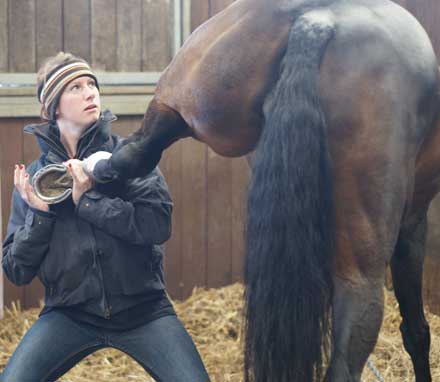
Manual therapy for the horse
Manual therapy is a vital field within equine physiotherapy concerned with pain and impairment of the neuromusculoskeletal system. Manual therapy refers to the passive or assisted active movement techniques applied by the therapist to the articular, neural and muscle systems for assessment and treatment.
Manual therapy for articular structures includes passive mobilization, which mainly effects the intra-articular and periarticular structures, and sometimes also effects the extra-articular structures. Further techniques for articular structures include joint manipulations, passive joint mobilization, passive physiological mobilization and passive accessory movements.
Another important aspect of manual therapy is addressing impairments in the myofascial system of the horse. This can be used to improve muscle length by stretching, various massage techniques, or soft-tissue techniques.
Another important soft-tissue system that should be able to slide and glide with the body's movements is the nervous system. This important system includes spinal nerves and peripheral nerves. Mobilization of the nerves not only benefits the nerve structures by reducing intraneural swelling, but can also improve the surrounding areas. The neural assessment can differentiate between the source of pain by sensitizing or biasing the movement to longitudinally lengthen the nerve or nerve bed.
Motor control in the form of motor skill retraining is sometimes necessary for full rehabilitation. This includes training stability and proprioception and can be done by inhand exercises such as walking over poles. Combining these different aspects makes manual therapy a vital part in physiotherapy management of horses.
> Goff L. Journal of Equine Veterinary Science. 2009;29(11):799-808. All rights reserved to 2009 Elsevier Inc. Click here for the Pubmed summary


